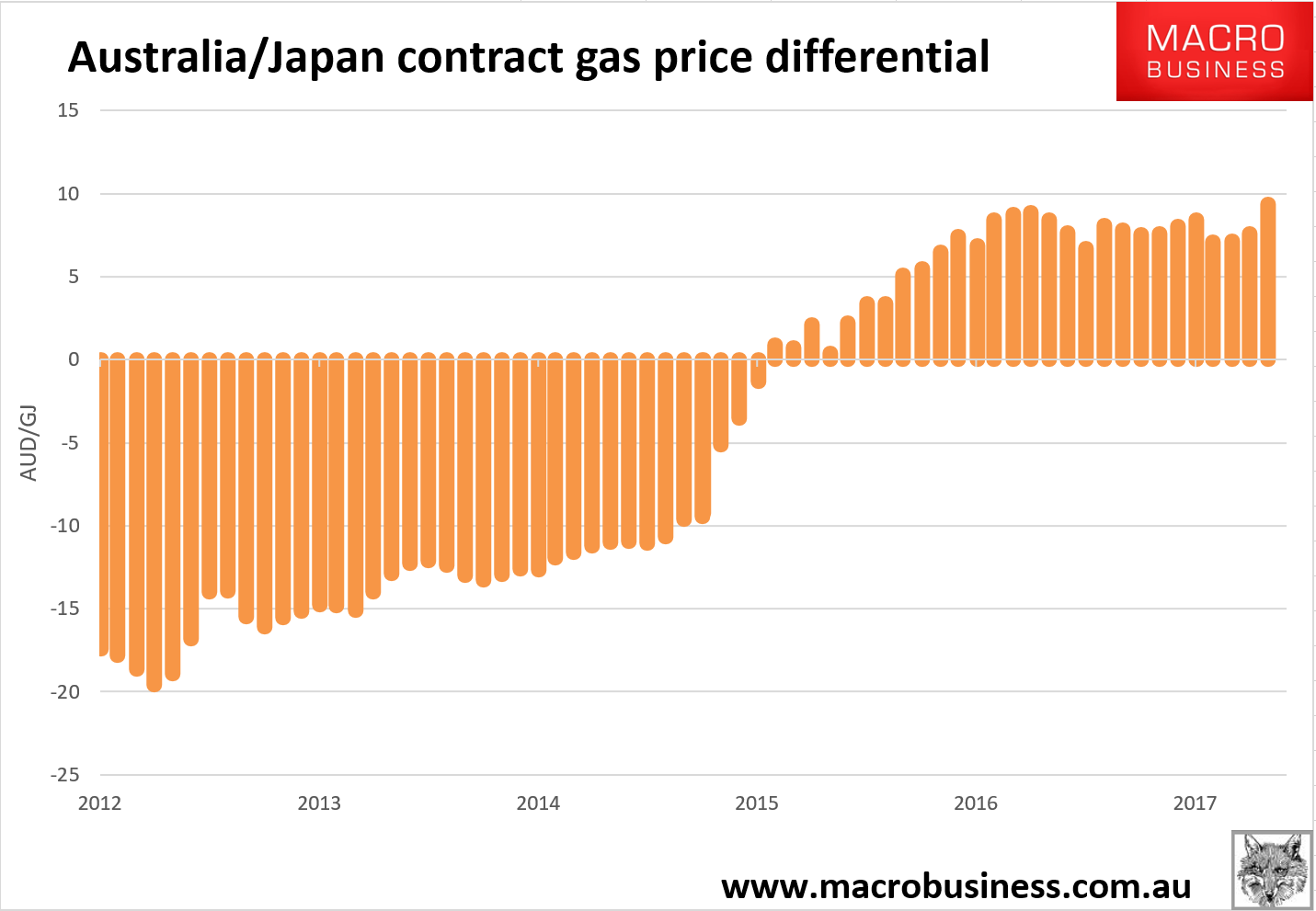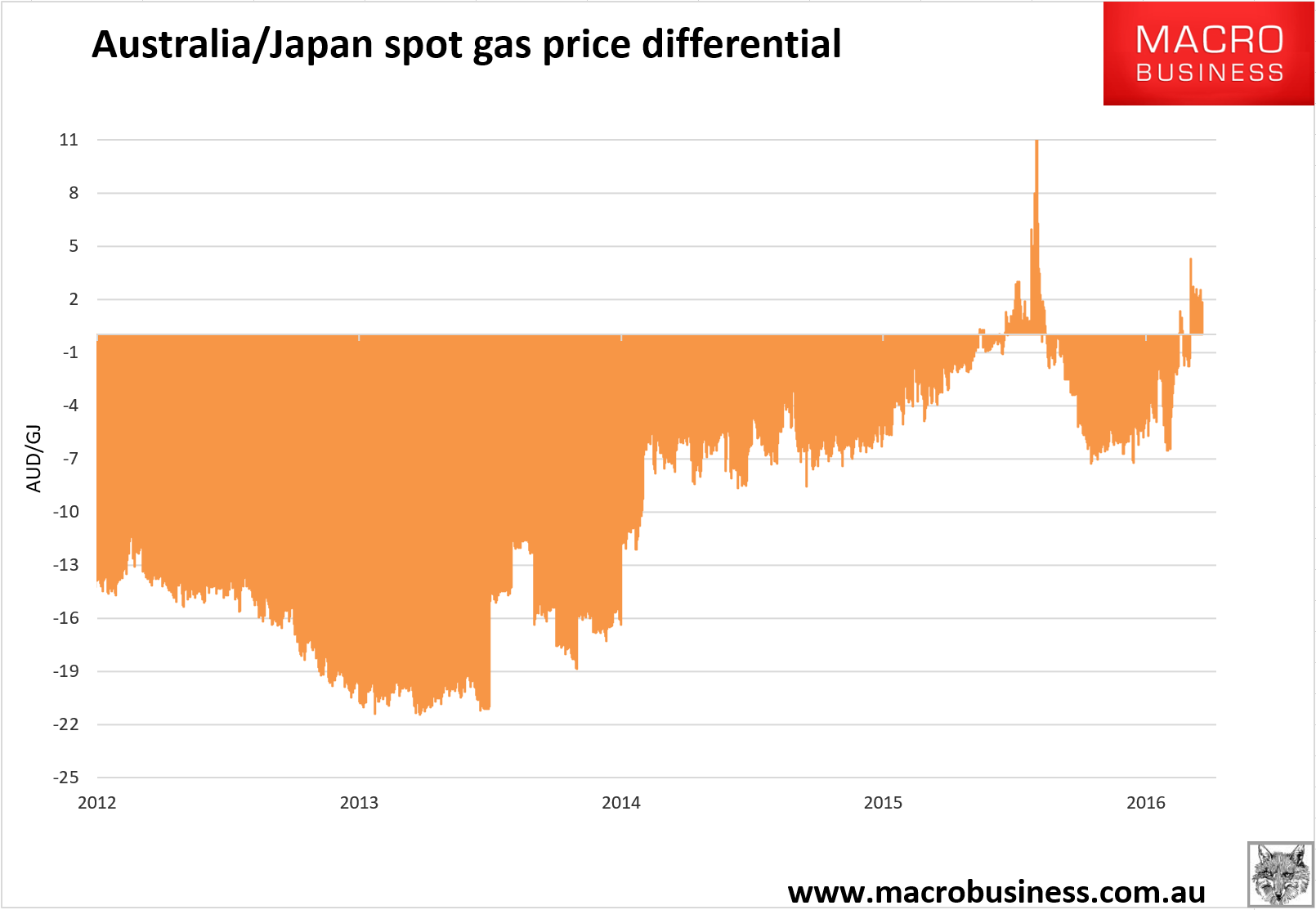Australia now has the most expensive energy bills in the cosmos:

Yet in terms of our resource endowment, we are probably closest to Norway on that chart. How did it come to this?
Jessica Irvine wrote a good piece a week ago summarising the three drivers of energy price rises in Australia:
In reality, there are three main components of household bills. Whether households actual ultimately pocket these savings will depend on what happens with all three.
The first, is the wholesale cost.That’s the cost of actually generating the electricity, be it burning lumps of coal, a gas-fired electricity plant, solar panels, wind turbines or whatever clever ways we may come up with in the future to produce electricity. Today, 77 per cent of Australian electricity comes from mostly brown and black coal, 10 per cent from gas, and 13 per cent from renewable sources.
For a long time, this part of the system, of producing the electricity and getting it into the grid, has been going pretty well. Australians have enjoyed a reliable and low-cost supply of wholesale energy.
Basically, we burned ship loads of cheap coal, and to hell with the environment.
This is the part of the system that is now utterly falling apart and is in most need of repair – which we’ll get to.
The second major component of household electricity bills is the cost of transmission and distribution. The costs involved in building poles and wires and actually getting electricity to your wall sockets makes up about 40 per cent of your total bill.
This part of the electricity price equation has been broken for decades, and is the main reason power bills have nearly doubled over the last decade.
Power lines are natural monopolies. Traditionally they were all government owned. Jeff Kennett privatised Victorian networks, but until very recently, distribution networks in other states, such as NSW and Queensland, have remained government owned, with regulated pricing.
And basically, they stuffed that up for consumers by deciding to let the networks earn a guaranteed rate of return, based on their costs. That is, the more they spent, the more they earned.
…The third and final component of a household’s bill is the margin added by electricity retailers. In theory, anyone can set up a business retailing electricity and there are many suppliers. In reality, pricing structures are so complex consumers do not exercise their power to switch providers, and retail margins remain higher than otherwise.
So, we got to where we are today pretty much thanks to the Australia Tax, that marvelous cocktail of busted ideology, rentier policy and plain stupidity that leads most Aussie “markets” to competitiveness disasters.
Electricity retailing is a toxic mix of foreign kids banging your door down representing firms aiming to be “least worst”. There is little to judge between them.
Distribution is now a beefed up and gold-plated grid that charges like a wounded bull just as demand is falling owing to the greatest decentralisation of energy since the Industrial Revolution. Almost alone it crashed Australian multi-factor productivity over a decade as $80bn was thrown at soon to be obsolete networks. Now, as customers go “off-grid” owing to its immense expense, it is forced to keep jacking up prices to cover lost market share, entering what is known as a death spiral.
Wholesale is a political football that has sunk prime ministers. Mercifully, today we are only here to discuss this last driver of prices, those that actually generate the power.
The AFR’s Phil Coorey describes where we are:
Energy Minister Josh Frydenberg has done a good job in commissioning Alan Finkel to come up with a policy that offers a way through the political impasse.
The biggest challenge remains the conservative right, people who pay lip service to climate change because they feel they have to, but do not believe emissions mitigation should be a driver of energy policy.
“It’s price, national security and reliability,” said one MP on Friday, who is part of a small but growing number gathering behind Assistant Cities Minister Angus Taylor, who is now leading the fight against a Clean Energy Target as modelled by Finkel.
As this paper revealed during the week, Taylor has gathered a following because several years ago he cast doubt on the modelled price impacts of the Renewable Energy Target, which have, to some extent, been vindicated.
He is now telling colleagues to not believe the modelling contained in the Finkel report, which says a CET will take the pressure off prices, because the modelling uses similar methodology to the RET.
Everybody in the Parliament agrees spiralling power prices are a massive problem, politically and economically. Any MP will tell you of a large business in his or her electorate about to go to the wall but cannot say so publicly because the banks will come after them.
Despite this mess of interests, it must be remembered that there has actually been a consensus plan for energy transformation despite the past fifteen years of political headbutting. It resembled that of other nations and actually favoured Australia owing to its generous resource endowment. It was to shift from coal to renewables via the “transitional fuel” of gas. A carbon price following Sheregold or Garnaut enabled it. A world dominated by the Renewable Energy Target enabled it. A world in which the Clean Energy Target predominates enables it. Today, if there were no decarbonisation policy at work at all, it would still happen given the risks facing coal in the developed world are now so high that it is priced out, and although renewable energy storage for baseload power is clearly becoming economic, gas is still competitive.
It is a testament to the sense and compelling economics of the plan that it survived just about any scenario. Gas turbines are cheap to build and much cleaner than coal and can support baseload power while renewable storage catches down its costs.
But! Today it is Australia’s truly idiot genius to have engineered just about the only scenario in which this plan collapses. It is to have wasted another $80bn by installing white elephant LNG export plants in QLD, leaving ourselves short of gas and sending the price of our “transitional fuel” to catastrophic highs. Thus we now have idled gas power capacity and no more being built even as coal is retired.
Whichever decarbonisation plan ends up being in force for the long term – let’s go with renewable energy targets – while gas is uber-expensive, we’re going to get more grid stability issues and shocking prices. This will be made all the worse for households and industry as gas utility prices skyrocket.
Yet, if the gas price is lowered all of these problems disappear. It is gas that sets the marginal price in the wholesale market. Lower it and all power costs will fall.
The ultimate irony is it is going to happen anyway. Gas prices where they are today, $15-20Gj versus $3Gj historically, are literally uneconomic. Thus if nothing is changed, further energy market adjustment will happen via demand destruction and the gas price will ultimately tumble. The choice is only between whether to do it now via sensible policy or to let the market do it, such as it is, more painfully via industrial hollowing out and consumers scrambling to get off-grid.
The closing word goes to Coorey and the Coalition:
The clear disagreement is how to solve the problem. The majority of the Parliament believes the CET in-principle is the way to go because, as Finkel says, investor uncertainty created this mess and ultimately, certainty will fix it.
…Some advocate the government construct coal-fired power stations. Others want nuclear power embraced, the National Electricity Market abolished and there is a growing groundswell for much stronger intervention in the gas market.
Turnbull has already threatened to invoke constitutional powers to limit gas exports to ensure adequate domestic supply. This is no longer feeding the bulldog. In Tuesday’s party room, South Australian Liberal MP Tony Pasin said there must now be direct intervention to control gas prices, through a gas reserve or direct price control. There are others who agree. One MP said gas price control may be deemed anti-competitive and leave the government exposed to legal action but the alternative was “tens of thousands of jobs lost”.
That is exactly right. The exorbitant price of gas brought about by shipping it offshore is destroying household budgets and industrial profits. The Curtis Island LNG plants were all mis-allocated capital built in a bubble, yet every Australian is now paying the price instead of the firms that stuffed it up. Local households and businesses are literally subsidising loss-making exports to Asia as the gas cartel applies a reverse tariff that generates cheap energy for Asian households and business:


This goes way beyond market failure. It is straight forward economic suicide:
- Curtis Island plants have break evens around $15Gj yet are shipping gas at $9Gj;
- the local gas shortage is only 5% of the volumes that we’re chucking offshore at huge losses;
- Asian customers don’t even want the gas. Take or pay contracts are force-feeding them and they are reselling volumes on the spot market. Japanese customers are actively seeking ways to break contracts.
Any and all government interventions to fix it should be on the table:
- hard gas reservation;
- harsh “use it lose it” rules;
- creation of a national gas company to force develop reserves and benchmark prices;
- nationalising Santos;
- price controls.
Whatever it is, 5% of those exports must be kept in Australia and the price be dropped to export net-back around $7Gj from $20Gj today. There is not enough gas left over to develop cheaply otherwise.

